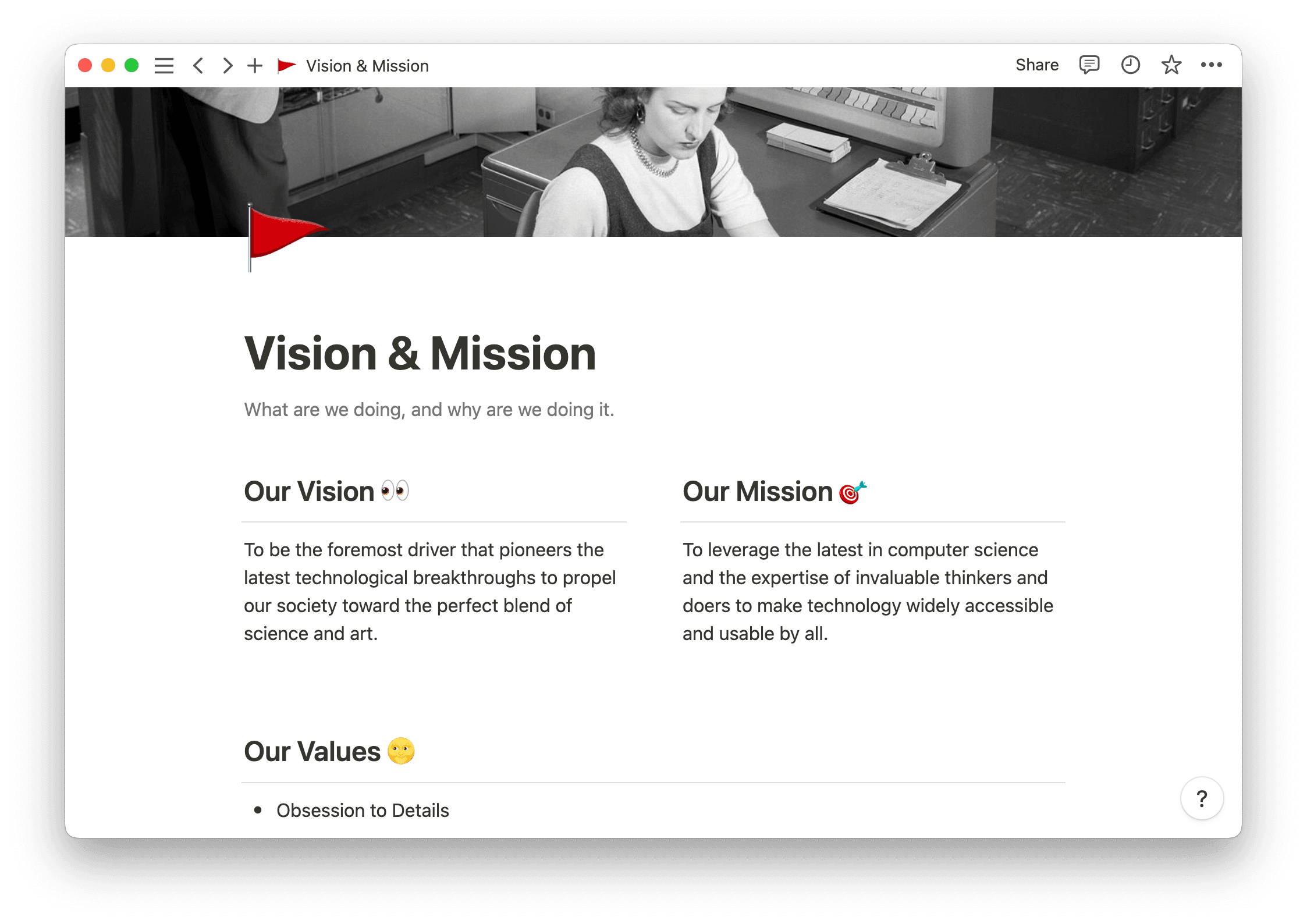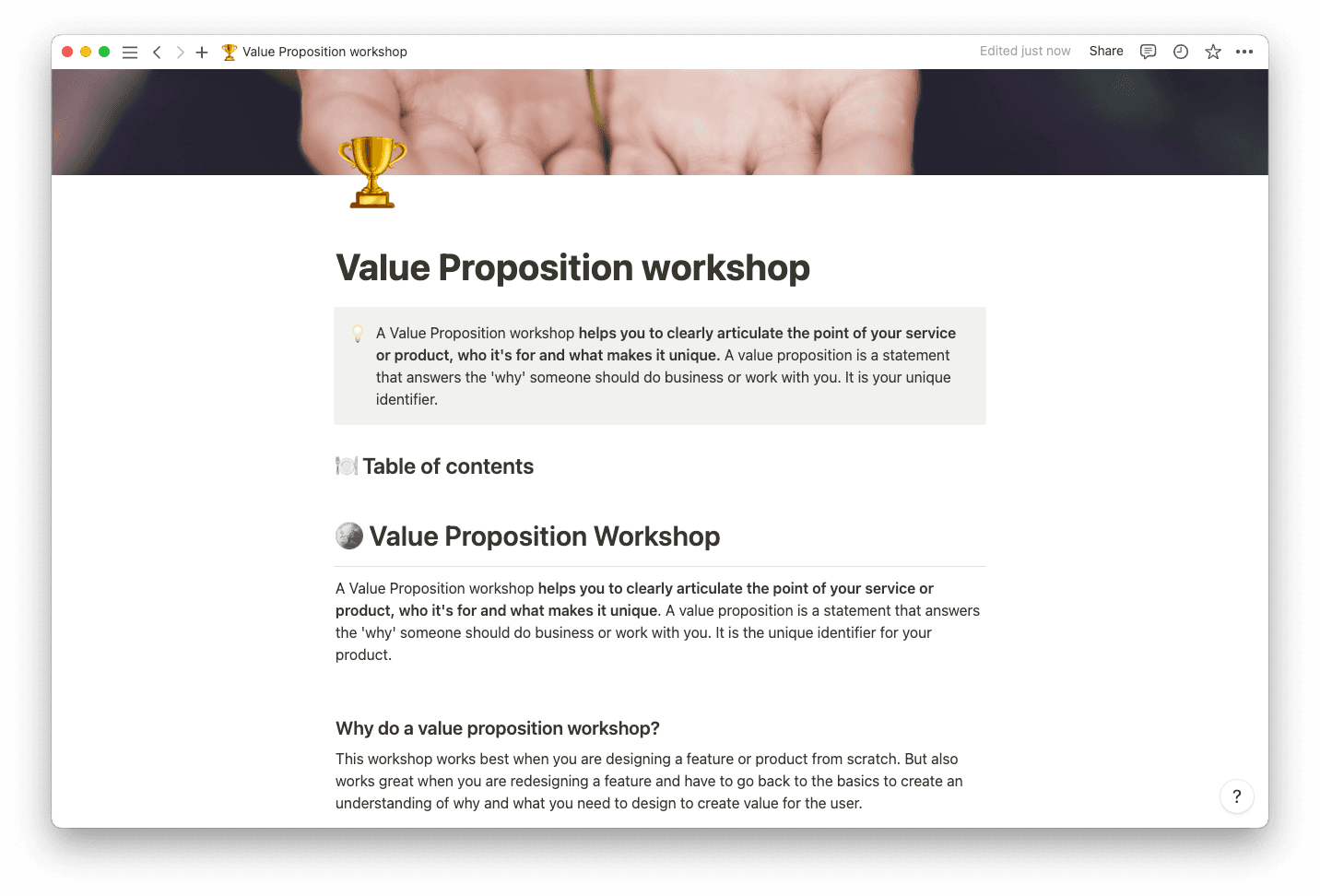A short blurb could never capture what your company has to offer.
You have an exciting history, a hardworking team, and products and services with tangible results — and it’s time to show them off. A company profile collects these elements into a captivating story that tells people exactly why they should buy from you, or work with you.
Here’s how to write a company profile that explains who you are, what you do, and why. It could be the last little push a prospect needs to take the leap and become a customer.
What’s a company profile?
A company profile is a concise but comprehensive overview of your business, usually in the form of an About page. This written description — sometimes paired with images and other content — highlights your company’s mission, values, and products or services. It introduces people to your business while presenting a cohesive, compelling brand identity.
Keep in mind that you shouldn’t just list facts and figures. That won’t make for an interesting read. You should aim to tell a story that communicates your unique selling proposition and explains why potential clients should work with you.
Include a section about how your company was founded to illustrate how passionate you are about your mission. Outline the organization's specific goals and highlight how you aim to help customers reach theirs. Use this opportunity to differentiate your business from competitors in a way that makes people want to learn more.

How an effective company profile sells your brand
A company profile establishes your presence and accentuates exactly how you stand out. Here are five reasons you should prioritize a strong profile:
Present your unique selling proposition — differentiate your brand from competitors by highlighting your unique features and values. By showcasing what sets you apart, you can better attract potential clients and customers.
Aggregate brand material — use your company profile as a knowledge base for important information about your brand and history. Include your values, goals, and an explanation of what you’re selling. Give potential customers and clients an all-in-one resource that quickly communicates what your business is all about.
Build customer confidence and your reputation — Build trust and credibility by being transparent about what your company does and doesn’t provide. Demonstrate your commitment to quality and explain exactly how you plan to maintain it.
Provide a foundation for marketing and communication strategies — use your profile to establish a consistent tone across all your marketing and communication channels. This document is ground zero for your company messaging, and it can help you create a cohesive and recognizable presence.
Attract top talent — a strong company profile doesn’t just speak to new customers; it’s also a good way to attract talent. Your profile doubles as an value proposition that tells prospective employees why they should want to work for you. Use it to showcase what you have to offer as an employer and connect with job seekers who share your values.
How to write a great company profile
Writing a comprehensive profile is a huge task, and it could take time to perfect the details. Start with a profile template to create a home base or showcase your vision and mission. And if you’re ready to just dive in, follow these tips to design your own profile from scratch:
1. Start with your story
Every company has a unique story to tell. Share yours in your profile to help your brand make a lasting impression. Create an engaging narrative that tells the story of your company's origin and values. It doesn’t have to be a novel — just long enough to help potential clients and investors connect with your brand on a deeper level.
2. Define your purpose and mission
Articulate your company's purpose and mission statements to help your audience understand the core values that drive your business. Try sorting them into bullet points to make them easier to read while highlighting your mission in a banner at the top. Engage your audience so they want to read more.
3. List your products and services
Write a comprehensive description of what your company offers. Explain top products and services, why you created them, and how they can help your customers or clients. This helps readers decide if your business actually has what they need. It’s also a good section to link out to your company website or product pages.
4. Make it easy to get in touch
Don't hide your contact information. Include a contact form along with relevant email addresses, phone numbers, social media handles, and mailing addresses — whatever suits your communication strategy. Tell potential customers how to engage with you and let them know you’re present and eager to talk to them.
5. Showcase recognitions and awards
If you have any accolades, this is the place to show them off. A list of recognitions and awards will show your audience that your business is established and respected in your industry. This builds credibility and trust with potential clients.
6. Include testimonials
Create a section for reviews from satisfied customers or case studies that demonstrate how your business has helped others achieve their goals. This can be a powerful way to showcase your strengths and build greater trust.
7. Detail employee demographics and statistics
Sharing information about your workforce, like demographic data and statistics about company culture, can help prospective employees better understand whether your organization is the right fit for them. On the flip side, your audience wants to know that you care about the people you work with -- so don't be afraid to show it off.
8. Finish with a call-to-action (CTA)
Make sure to include a clear CTA at the end of the profile. This could be an invitation to schedule a consultation, visit your website, or follow your social media accounts. Make it easy for interested people to learn even more about you and convert.

Company profile examples
These successful company profiles cover all the bases. They use in-depth content to establish their brand identities in a way that’s both informative and visually interesting.
Here are four examples and what you can learn from each of them:
Notion — putting your team members front and center shows your audience the people behind the product. Notion has a dedicated section to highlight its investors, including stylized icons that also establish brand identity. This approach humanizes your company and helps customers feel more directly connected with you.
Google — most people know what Google does, but they might not know the “why” behind it, which is what this profile accomplishes. It keeps things simple by starting with a clear, stylized headline that states its mission, followed by links to case studies. Linking out to new pages is a great way to let interested readers learn more without cluttering the layout.
Starbucks — use the profile as an opportunity to explain your company's social responsibility initiatives. Starbucks’ About page focuses on its sustainability goals and includes information on ethical sourcing and environmental practices. This approach shows that your company values go beyond profit, and shows your audience how much you care.
Philips — include visuals like videos, images, and stylized icons to enhance your brand image. The Philips profile page starts with a silent video that tugs at the heartstrings, showing how its products and services help people live better lives. Brand-specific media captures your target audience’s attention and gives them a taste of what you have to offer.
Launch your company profile today
If a potential customer is looking at your profile, chances are they’re already excited about your brand. Take this opportunity to connect with them and give them the boost they need in order to convert.
If you’re looking for more productivity resources, check out what Notion’s connected workspace has to offer for both enterprises and teams. We’re here to support you as you build a company database that brings you and your audience together.







